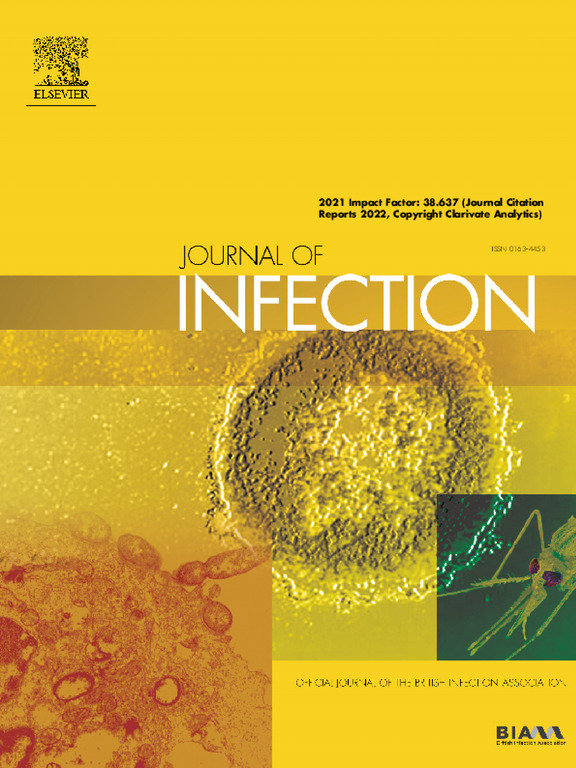解码SARS-CoV-2、IAV和RSV的死后感染动力学:公共卫生和新发传染病管理的新见解
IF 14.3
1区 医学
Q1 INFECTIOUS DISEASES
引用次数: 0
摘要
目的:呼吸道病毒在尸体中的持久性和传染性尚不清楚,这给法医和卫生保健专业人员带来了重大的生物安全风险。本研究系统评估了SARS-CoV-2、甲型流感病毒(IAV)和呼吸道合胞病毒(RSV)在不同环境条件下的死后稳定性和传播潜力,为病毒动力学提供了重要见解。方法为了评估SARS-CoV-2的死后稳定性,在4℃、室温(RT, 20-22℃)和37℃条件下采集感染尸体的组织样本。定量分析病毒动力学,组织病理学和免疫组织化学表征组织特异性分布。此外,在体外和尸体组织中进行了比较分析,以表征相同条件下IAV和RSV的生存动态。结果sars - cov -2具有较长的死后传染性,在RT和37℃下可持续5天,在4℃下可持续7天以上,在RT和37℃下的前72 h和24 h内传播的风险最高。相比之下,RSV在死后存活1-2天,而IAV在死后仅存活数小时。病毒的衰变速率是温度依赖性的,并且在不同的组织中有所不同,显示出不同的死后存活动力学。本研究首次全面分析了病毒在尸体中的持久性,揭示了与IAV和RSV相比,SARS-CoV-2的稳定性更长。这些发现强调需要加强死后生物安全规程,以减轻法医和临床环境中的职业暴露风险。通过阐明不同环境条件下的病毒衰变动力学,本研究为感染控制策略奠定了重要基础,为新出现的呼吸道病原体的生物安全政策提供了信息。本文章由计算机程序翻译,如有差异,请以英文原文为准。
Decoding post-mortem infection dynamics of SARS-CoV-2, IAV and RSV: New insights for public health and emerging infectious diseases management
Objectives
The persistence and infectivity of respiratory viruses in cadavers remain poorly characterized, posing significant biosafety risks for forensic and healthcare professionals. This study systematically evaluates the post-mortem stability and transmission potential of SARS-CoV-2, influenza A virus (IAV), and respiratory syncytial virus (RSV) under varying environmental conditions, providing critical insights into viral kinetics.
Methods
To assess the post-mortem stability of SARS-CoV-2, tissue samples were collected from infected cadavers at 4 ℃, room temperature (RT, 20–22 ℃), and 37 ℃ over a predetermined timeframe. Viral kinetics were analyzed using quantitative assays, while histopathology and immunohistochemistry characterized tissue-specific distribution. Additionally, comparative analyses were conducted both in vitro and in cadaveric tissues to characterize the survival dynamics of IAV and RSV under identical conditions.
Results
SARS-CoV-2 exhibited prolonged post-mortem infectivity, persisting for up to 5 days at RT and 37 ℃ and over 7 days at 4 ℃, with the highest risk of transmission occurring within the first 72 h at RT and 24 h at 37 ℃. In contrast, RSV remained viable for 1–2 days, while IAV persisted for only a few hours post-mortem. Viral decay rates were temperature-dependent and varied across tissues, demonstrating distinct post-mortem survival kinetics.
Conclusions
This study presents the first comprehensive analysis of viral persistence in cadavers, revealing prolonged SARS-CoV-2 stability compared to IAV and RSV. These findings underscore the need for enhanced post-mortem biosafety protocols to mitigate occupational exposure risks in forensic and clinical settings. By elucidating viral decay dynamics across environmental conditions, this research establishes a critical foundation for infection control strategies, informing biosafety policies for emerging respiratory pathogens.
求助全文
通过发布文献求助,成功后即可免费获取论文全文。
去求助
来源期刊

Journal of Infection
医学-传染病学
CiteScore
45.90
自引率
3.20%
发文量
475
审稿时长
16 days
期刊介绍:
The Journal of Infection publishes original papers on all aspects of infection - clinical, microbiological and epidemiological. The Journal seeks to bring together knowledge from all specialties involved in infection research and clinical practice, and present the best work in the ever-changing field of infection.
Each issue brings you Editorials that describe current or controversial topics of interest, high quality Reviews to keep you in touch with the latest developments in specific fields of interest, an Epidemiology section reporting studies in the hospital and the general community, and a lively correspondence section.
 求助内容:
求助内容: 应助结果提醒方式:
应助结果提醒方式:


